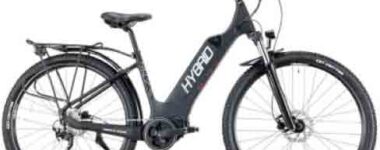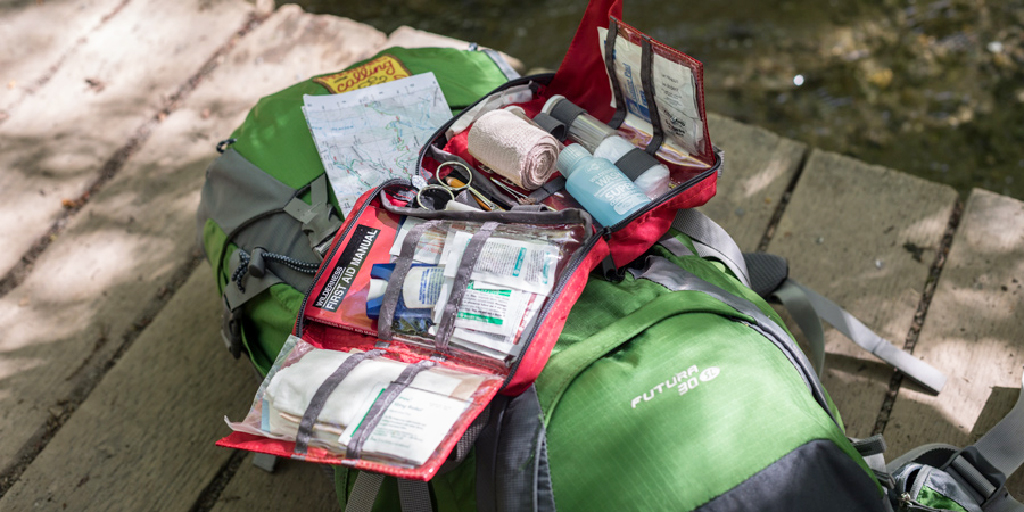Latest News
Share this post:
A bike that fits well and is right for your height, flexibility and riding style is a bike you’ll love riding. A bike that fits poorly can lead to inefficient riding, muscle aches and pains, and general discomfort that might discourage you from riding as long or as far as you want.
Hands-on help: Whether you’re shopping for a brand-new bike, adjusting a used bike or just checking to make sure your fit is perfect on your current bike, a skilled bike tech or sales person will always help you.
Shopping online? Though not as easy (or as fun) as shopping for bikes in person, you can still research and/or buy a bike online by knowing your measurements and comparing them with a bike’s geometry.
How to Fit Your Bike
While there are some basic fit considerations for any bike you’ll buy. Bike sizing can become quite intricate if you are a serious rider looking for specific performance characteristics. This article focuses on entry-level fit considerations.
-
-
-
- Fit your bike for how you currently ride. You may aspire to match that low, long, aerodynamic position of the pros, but it’s important to set the bike up to match your current abilities. As you work on strength, flexibility and endurance, you can readjust your fit later.
- Make sure you have the correct frame size. If you don’t have the right frame from the outset, you’ll have difficulty getting it comfortable no matter what adjustments you make later. Read on for details on assessing your frame size.
- Make easy adjustments to existing components: Some adjustments can be made easily with the bike’s existing components, including the seat height, seat angle and front-and-back seat position.
- Identify components that you can swap out. For example, a new stem can change the location of the handlebars for a more comfortable riding position.
- Check your cleat fit: Though not discussed in the basic fit here, be aware that the placement of cleats on your bike shoes can also impact fit. Set too far forward, they can cause knee pain, Achilles discomfort, numbness or hotspots. Too far back and you won’t be getting the optimal power transfer from your muscles to the bike. Talk to a bike fitter to make sure your cleats are positioned correctly.
-
-
How Bikes are Sized
Different types of bikes are sized differently and will have slightly different fits:
-
-
-
- Road bikes can come in both standard (S, M, L) sizes and numerical sizes. The same size across different brands can fit very differently and the number may not correlate to a common measurement. You might ride a size 54 Cannondale road bike, but a size 54 Diamondback road bike may feel quite different.
- Mountain bikes come in standard sizes (S, M, L) and are generally similar across brands. For example, if you like your size small GHOST mountain bike, it’s likely (but not definite), that you’ll want a small in other brands as well.
- Hybrid bikes, unsurprisingly, are a mix of the two, with more forgiving sizing than elite road bikes, but not quite as flexible as the sizing of most mountain bikes.
-
-
Bike Frame Standover Height
 First, make sure you can straddle your bike with your feet flat on the floor. Be sure to wear your cycling shoes when evaluating standover height, since they add to your overall leg length.
First, make sure you can straddle your bike with your feet flat on the floor. Be sure to wear your cycling shoes when evaluating standover height, since they add to your overall leg length.
Road bikes: If the bike has a traditional straight top tube that is parallel to the ground, you should have approximately 1” of clearance between the ground and tyres when you lift the bike as you’re straddling it.
If the bike has a sloping top tube (semi-compact or compact design) expect to have clearance of 2.5cm or more. Both men’s and women’s bikes can have compact frames.
Mountain bikes: When you lift the bike, you want 5cm minimum clearance between the tyres and the ground. If your bike has full suspension, it’s okay to have less initial clearance (2.5 to 5cm) because the suspension compresses under your weight once you sit on the bike. That said, the amount of clearance is largely affected by the slope of the top tube down toward the rear wheel. For example, if the slope is dramatic, you’ll likely have ample clearance no matter what size the frame is. Because of this, you can’t rely solely on standover clearance to determine if a bike fits.
Hybrid bikes: If your hybrid bike is a city commuter, use the road bike guidelines. If it’s a step-through style, you don’t really have to worry about standover height. Most of these have steeply sloping top tubes that let you step over easily and put your feet flat on the ground when seated.
Bike Fitting: Upper Body Position
 For a bike to fit well, simply knowing your standover height may not be enough to ensure a great fit. A good second piece of data is the effective top tube (ETT) length.
For a bike to fit well, simply knowing your standover height may not be enough to ensure a great fit. A good second piece of data is the effective top tube (ETT) length.
ETT describes the horizontal distance between the head tube and the seat tube, regardless of whether you have a straight top tube or one that slopes. Having a bike with the correct ETT will help set you up to fine-tune your upper body position with smaller adjustments later.
Assessing Your Upper Body Position
Have a sales person or bike tech assess your body position on your chosen bike.
 Proper position: Aim for a riding position that gives you a modest amount of shock-absorbing bend in your arms without forcing you to reach too far to apply the brakes. If it feels as though you could comfortably play piano keys on your handlebar, your arms are in a good position.
Proper position: Aim for a riding position that gives you a modest amount of shock-absorbing bend in your arms without forcing you to reach too far to apply the brakes. If it feels as though you could comfortably play piano keys on your handlebar, your arms are in a good position.
For road bikes, your torso will form a 45-degree angle with your hips, and a 90-degree angle with your arms. If you have tight hamstrings or short arms, you can swap out the stem to bring the handlebar closer and keep the strain off your back and shoulders.
For mountain and hybrid bikes, these exact angles are not as critical since the riding positions are often more upright and relaxed. With mountain bikes especially, more time is spent out of the saddle, so dialling in the perfect seated pedalling position isn’t as crucial.
Bike Seat Height
With your seat height and position dialled in, you have the best chance of pedalling efficiently and powerfully using your major leg muscles.
To check your seat position, ask a sales person or friend to hold the bike upright while you hop on the seat.
 Proper position: With your foot at the bottom of the pedal stroke, you should see a slight bend in the leg, reaching about 80-90 percent of full leg extension. This is true for road, mountain and hybrid bikes. (If you expect to progress quickly on your mountain bike, you may also want to look for bikes with height-adjustable seat posts. These bikes let you raise or lower the seat by pushing a button, helping you adjust instantly to changing terrain.)
Proper position: With your foot at the bottom of the pedal stroke, you should see a slight bend in the leg, reaching about 80-90 percent of full leg extension. This is true for road, mountain and hybrid bikes. (If you expect to progress quickly on your mountain bike, you may also want to look for bikes with height-adjustable seat posts. These bikes let you raise or lower the seat by pushing a button, helping you adjust instantly to changing terrain.)
Adjusting the seat height: Loosen the quick-release lever on the seat post (or use a wrench if there’s a binder bolt) and raise or lower the post as needed. Be careful not to raise the post beyond the “minimum insertion mark” etched into its side. (If you need to change the seat height that dramatically, you may need a different frame size.)
Retighten the quick-release lever or binder bolt before riding. (Be careful not to over tighten the binder bolt. Use a torque wrench to tighten the bolt to the manufacturer’s specification, or have a mechanic tighten this properly. Be especially careful with a carbon-fibre frame and/or seat post.)
Bike Seat Fore/Aft Position
Proper position: When your right foot is at the 3 o’clock  position of the pedal stroke, your knee should be aligned over your forefoot. A plumb line dropped from the bottom of your kneecap should fall straight to the ball of your foot and through the centre of the pedal. In this position, your shin will be tilted forward slightly.
position of the pedal stroke, your knee should be aligned over your forefoot. A plumb line dropped from the bottom of your kneecap should fall straight to the ball of your foot and through the centre of the pedal. In this position, your shin will be tilted forward slightly.
Adjusting the fore/aft position: Make adjustments by loosening the saddle binder bolt (sometimes called the seat fixing bolt) and sliding the saddle forward or backward as needed. This generally applies to road, mountain and hybrid bikes, but remember, this is just a starting point. As you become more experienced you may find you like to position your saddle a little differently.
Now check your seat tilt. With few exceptions, the seat should be parallel to the ground. To make seat tilt adjustments, simply loosen the seat binder bolt (or bolts) at the top of your seat post (directly underneath your seat) and adjust as needed.
(Note: The seat binder bolt is different from the seat post binder bolt.) Retighten the seat bolt(s) before riding.
Fitting Women’s Bikes
Women often have proportionately narrower shoulders and longer legs compared to their torsos than men, and women-specific bikes are designed to meet these needs. Women’s bikes often have narrower handlebars and shorter or more compact frame dimensions. Some women find that men’s bikes fit well and are comfortable, but women-specific bikes may provide a more precise fit for some.


 Collecting and Propagating Seeds
Collecting and Propagating Seeds China on a Plate: The Flavours of a Nation (with a Spotlight on Sichuan)
China on a Plate: The Flavours of a Nation (with a Spotlight on Sichuan) Kinesiology Cross Patches
Kinesiology Cross Patches Camaraderie On a Walking Tour…
Camaraderie On a Walking Tour… How E-Biking Has Transformed Biking Tours
How E-Biking Has Transformed Biking Tours








